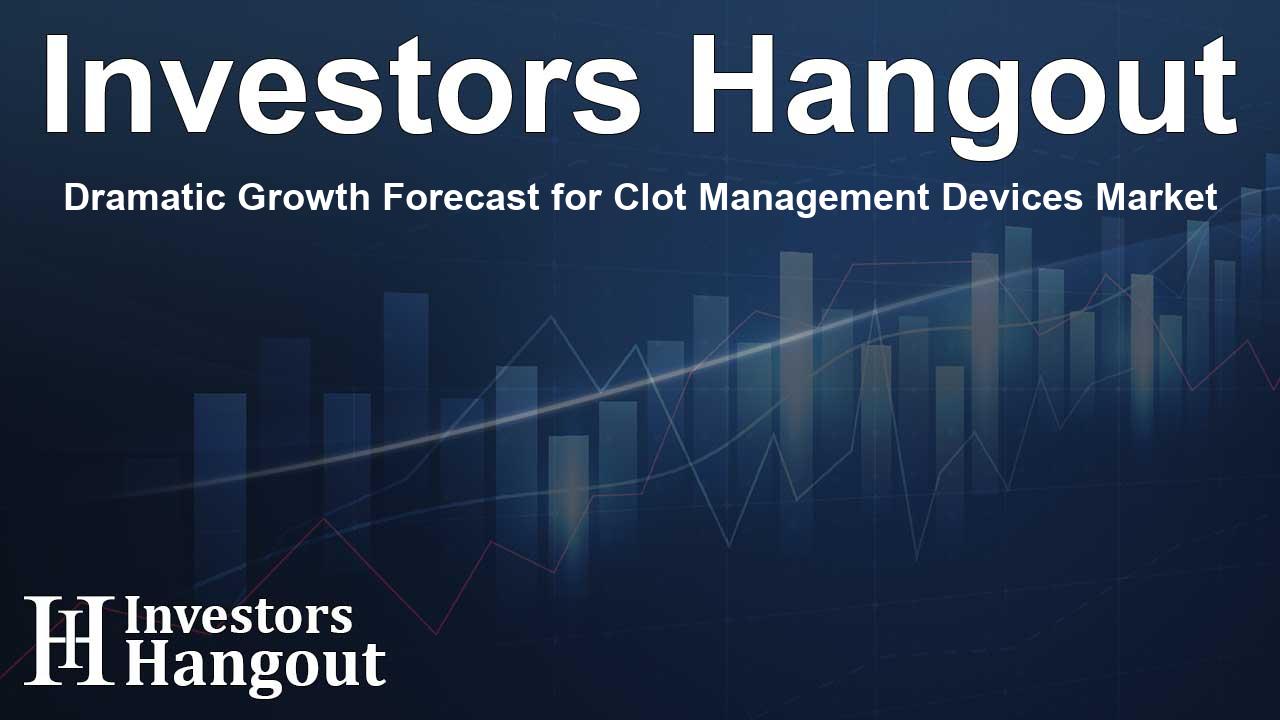Dramatic Growth Forecast for Clot Management Devices Market

Understanding the Clot Management Devices Market Growth
The global landscape for clot management devices is rapidly evolving, driven by an increasing prevalence of thromboembolic disorders. This market, which was valued at $2.1 billion, is set to reach $4.3 billion by 2035, growing at a compound annual growth rate (CAGR) of 6.2% from 2024 to 2035. This remarkable growth can be largely attributed to advancements in medical technology and a shift towards minimally invasive surgical options.
Key Drivers Accelerating Market Growth
Several key factors are steering the growth of the clot management devices market. The rise in thromboembolic disorders is a primary contributor, with conditions such as deep vein thrombosis and pulmonary embolism becoming increasingly common in modern society. Furthermore, the demand for minimally invasive surgical procedures is on the rise, emphasizing the need for innovative clot management solutions that enhance recovery times and improve patient outcomes.
Technological Advancements
As technology advances, new solutions are continuously being developed to meet the needs of healthcare providers and patients alike. For instance, devices that facilitate quicker and more efficient clot removal are increasingly being integrated into clinical practice. The ongoing evolution of these technologies presents exciting growth opportunities for both existing and emerging players in the market.
Challenges Facing the Market
Despite optimistic forecasts, the high costs associated with clot management devices can hinder their widespread adoption. However, as more healthcare facilities recognize the long-term cost benefits of utilizing these advanced technologies, the market is likely to overcome this challenge. Moreover, ongoing development of competitive pricing strategies will be vital for ensuring accessibility.
Market Segmentation Insights
A deeper look into the market reveals that the percutaneous thrombectomy devices segment currently leads the market, accounting for 40% of the revenue share. Its popularity stems from its efficacy in quickly removing clots, thus reducing complications and hastening recovery times for patients.
Neurovascular Embolectomy Devices on the Rise
Interestingly, the segment for neurovascular embolectomy devices is expected to witness the fastest CAGR of 7.0% through 2035. This growth is driven by rising incidences of neurovascular disorders like ischemic strokes, underscoring the critical need for effective treatment options. The shift towards faster intervention methods in cognitive care is heightening awareness among healthcare providers.
Regional Analysis of Market Dynamics
Regionally, North America retains the largest market share in the clot management devices sector, contributing to over 40% of the overall revenue. This dominance is largely due to advanced healthcare infrastructure, a high prevalence of cardiovascular conditions, and a robust regulatory environment supporting innovative treatments.
Asia-Pacific: A Region to Watch
Conversely, the Asia-Pacific region is anticipated to showcase the fastest growth rate of 6.8% between 2024 and 2035. With an aging population and improvements in healthcare infrastructure, countries like China are witnessing a surge in demand for advanced medical devices. Government initiatives to enhance health service access further bolster this growth trajectory.
Market Leaders and Their Strategies
Prominent companies in the clot management devices market include major players such as Boston Scientific Corporation, Medtronic Plc, and Abbott Laboratories. These organizations are engaging in strategic initiatives such as product launches and collaborations to expand their market presence and technological offerings.
Competitive Landscape
The market is becoming increasingly competitive, with players adopting innovative strategies to maintain their edge. From regulatory compliance to investment in research and development, these companies are focusing on creating solutions that challenge traditional methods while enhancing patient care.
Future Outlook for the Clot Management Devices Market
As the world of healthcare continues to evolve, the clot management devices market is set to benefit from a myriad of factors driving growth and innovation. Stakeholders, from manufacturers to healthcare providers, must collaborate to harness these opportunities effectively, ultimately leading to improved patient outcomes and community health.
Frequently Asked Questions
What is the projected market size of the clot management devices market?
The clot management devices market is projected to reach $4.3 billion by 2035.
What are the main drivers of growth for this market?
Key drivers include the increase in thromboembolic disorders and the shift towards minimally invasive surgical techniques.
Which segment currently holds the largest market share?
The percutaneous thrombectomy devices segment holds the largest share of the market.
Which region is expected to experience the fastest growth?
The Asia-Pacific region is anticipated to see the fastest growth rate, due to expanding healthcare infrastructure.
Who are the major players in the clot management devices market?
Major players include Boston Scientific Corporation, Medtronic Plc, and Abbott Laboratories, among others.
About The Author
Contact Evelyn Baker privately here. Or send an email with ATTN: Evelyn Baker as the subject to contact@investorshangout.com.
About Investors Hangout
Investors Hangout is a leading online stock forum for financial discussion and learning, offering a wide range of free tools and resources. It draws in traders of all levels, who exchange market knowledge, investigate trading tactics, and keep an eye on industry developments in real time. Featuring financial articles, stock message boards, quotes, charts, company profiles, and live news updates. Through cooperative learning and a wealth of informational resources, it helps users from novices creating their first portfolios to experts honing their techniques. Join Investors Hangout today: https://investorshangout.com/
The content of this article is based on factual, publicly available information and does not represent legal, financial, or investment advice. Investors Hangout does not offer financial advice, and the author is not a licensed financial advisor. Consult a qualified advisor before making any financial or investment decisions based on this article. This article should not be considered advice to purchase, sell, or hold any securities or other investments. If any of the material provided here is inaccurate, please contact us for corrections.
